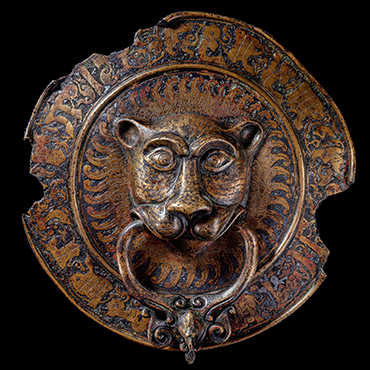The David Collection was founded in Copenhagen in AH 1364/1945 CE by C.L. David (AH 1294–1379/1878–1960 CE), a Danish lawyer, businessman, and avid art collector. His main interests were in Danish art of the late 14th century AH/19th century CE to the mid-15th century AH/20th century CE and European decorative arts of the 12th to 13th centuries AH/17th to 18th centuries CE, particularly ceramics. This sparked his interest in Islamic ceramics. In AH 1364/1945 CE, he decided to preserve his collection and historic townhouse in central Copenhagen for posterity. In AH 1366/1947 CE both were donated to a foundation bearing his name, along with the necessary funding. Today, this foundation manages the David Collection.
At the time of his passing, David’s collection of Islamic art was relatively modest, but it soon became the primary focus of acquisitions. Now, the David Collection is Denmark’s only internationally recognized museum dedicated to Islamic art. The collection includes artworks from various regions and eras of the Islamic world, displayed in a permanent exhibition. Islamic art is also the focus of the scholarly Journal of the David Collection. The David Collection joins AlMadar with a selection of exceptional works of art drawn from across the Islamic world. What links the pieces, whether from 5th-century AH/11th-century CE al-Andalus or 11th-century AH/17th-century CE India, is an emphasis on symmetry as the underlying basis of their ornamentation.
Mirror
The reflective side of this mirror is plain, while the back features concentric bands of calligraphy and raised relief images. Crafted in Chinese style, it could be held in the hand or suspended by a strap through the loop on the reverse side. Its impressive size, weight, and the royal inscription suggest it is a highly symbolic object.
The outer band’s inscription is dedicated to Abu al-Fadl Artuq Shah, the last Artuqid ruler of Harput in Eastern Anatolia (d. after AH 631/1234 CE), detailing his lineage. The middle band contains figural representations of the zodiac signs, while the third includes busts representing the planets Jupiter, Saturn, Mercury, and Venus, along with the sun and the moon. At its center sits an eagle, a bird traditionally associated with the sun in Greek and Middle Eastern traditions.
The Artuqid rulers were deeply interested in classical philosophy and Islamic metaphysics. The imagery on the mirror adds layers of meaning: Ibn ‘Arabi (AH 560–637/1165–1240 CE) suggested that Allah created the universe as an unpolished mirror destined to be polished in the earthly realm. Meanwhile, Al-Ghazali (d. AH 505/111 CE) likened the heart to a polished mirror, capable of reflecting divine truth.
Eastern Anatolia, Türkiye, c. AH 627/1230 CE
Bronze, diam. 24 cm, approx. 2.3 kg
The David Collection, 4/1996

